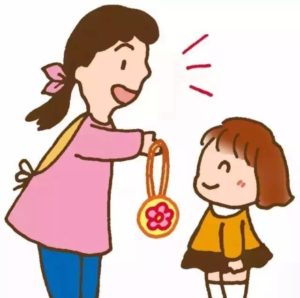Children learn how to act in public by observing others. Through positive and negative reinforcements, they will eventually discover the appropriate behavior that aligns with the public perception. Children of age 2 to 3 years old yet have the idea of social boundaries and their effect on others. Teaching them empathy and appreciation will take much time. To shorten the learning process, parents can consider the following methods for teaching children good manners:
1. Role Playing
Acting out a behavior to show a child how others might interpret the gesture can improve the child’s ability to empathize. For example, When a child answers a direct “No” to someone offering food, the person may be stunned by the answer because he/she is trying to be nice. A courteous answer might be “No, thank you, I am fine”. Next time, before your child opens a present, show them to thank the gift giver first then proceed to opening it.
2. Explanations
2~3 years old children like to ask “why”. This is the time to explain to them the reason behind different behaviors. For example
- Child: Why do we say “please” and “thanks”?
- Parent: Because saying them will make the other person happy.
- Child: Why do we say “hello” when we see someone?
- Parent: To show that you see them.
- Child: Why do we lower our voice when we are in public?
- Parent: Because being loud and noisy is not considerate to other people.
3. Encouragement
What to say and how to behave in a situation require actual experience to build up the knowledge. Therefore, when a child do something right, they need to be acknowledged for their good behavior.
4. Lead by Example
Everything that a child does is reflective of their parents. say “good morning” before noon, say “goodbye” before leaving the house, say “I am home” when arriving at the door, say “good night” before bed, are all daily greetings that will be the foundation of family value. As parents, saying holiday greetings during the specific holiday is a great way to educate children on manners.
5. Story Telling
Using characters from a story they’ve read as examples can also teach children about good manners. Parents can allow their children to act out a character from the story to illustrate the behavior. Although children have the basic language skill to express what they mean, their vocabulary is not quite established. In that case, parents can take on both roles of the initiator and the responder in the story.
6. Practice
Best way to cultivate good manners is by practicing. For example, pretend they are a customer in a bakery, you may teach them to say something like “Could I get a cake, please madam”, “Thank you madam”. Upon meeting neighbors, teach them to say “hello, how are you”, as well as, “good bye, see you later” when they leave the scene.
